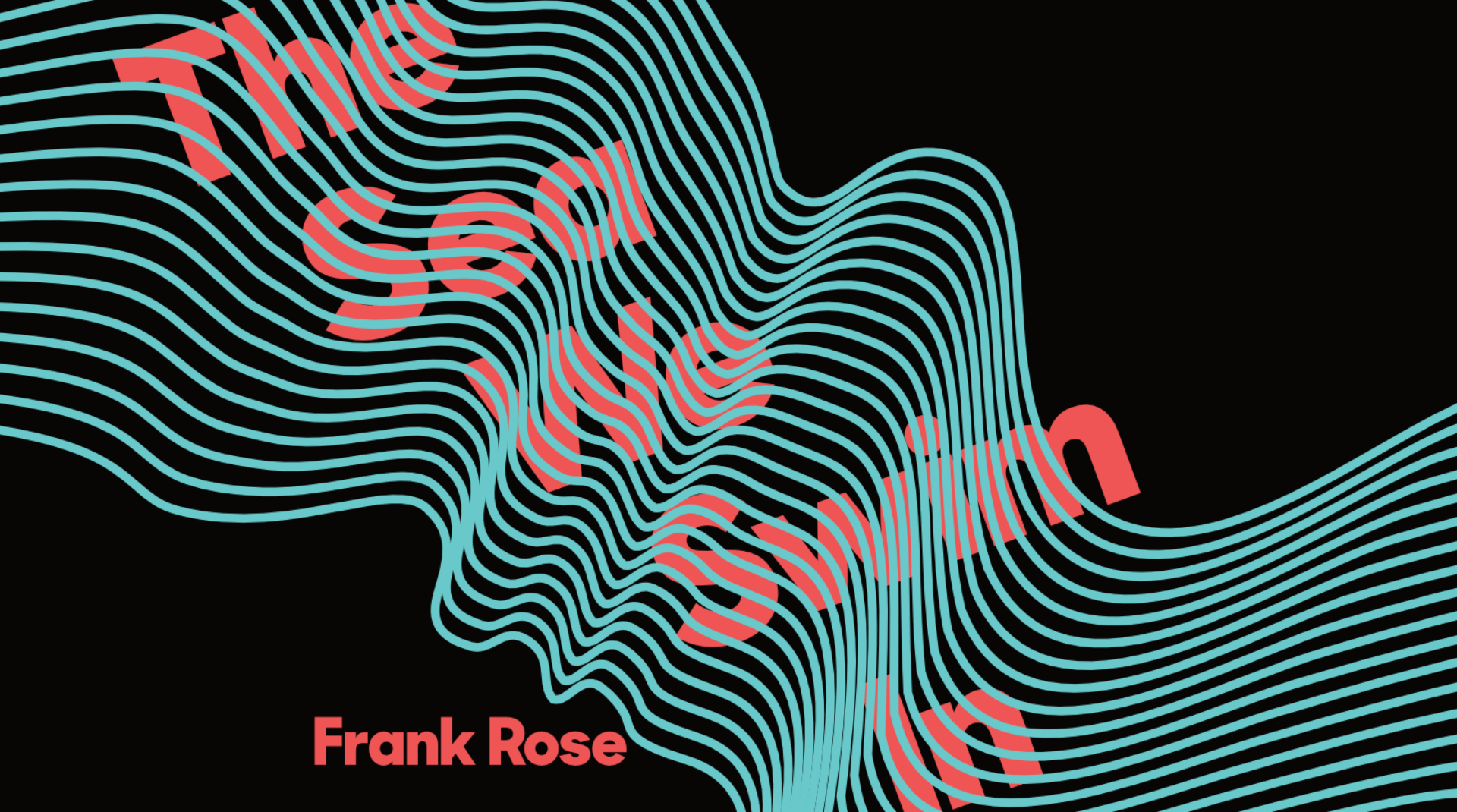WHAT CAN WE LEARN FROM THE WALKING DEAD? by Frank Rose
How did a little cable channel turn a post-apocalyptic zombie show into one of television’s biggest hits? By creating a series of experiences that transformed it from a product to a platform.
A few years back, when Charlie Collier, then the president of AMC Networks, wrote about the rise of immersive television, he singled out his most popular show for attention. Five years after its premiere, The Walking Dead had become one of the most phenomenal success stories in television. It not only drew higher ratings than sports, cable’s mainstay, but in its third season it became the first cable show in history to beat the broadcast networks in the all-important 18-to-49 viewer demographic. In 2016, the premiere episode of the spin-off series Fear the Walking Dead became the most-watched show on television, and Talking Dead, a show about the show, was the most-watched talk show. Meanwhile, ad revenues at the company’s flagship network, fueled by demand for the franchise, nearly doubled to an estimated US$500 million between 2010, the year it debuted, and 2015. As Collier put it in the online publication ReDef, “The series exists on television as a live event for only 16 nights a year but remains an active and vibrant community all year long. Fan events, panels, releases of clips and images, ongoing discussions, and a strong social presence keep the series very much front and center…. Immersive dramas both benefit from and demand this kind of commitment.”
As technology gives rise to an ever-proliferating array of digital media and devices, stories are being told on multiple media at once—on television, online, through books and games, through physical experiences in the real world. This is deep media, and it’s been growing for well over a decade. But what Collier is describing is much more than a labor-intensive, year-round promo effort. AMC essentially built an online information exchange around The Walking Dead—a service that fans can use to access information about the show and its characters and, even more importantly, to interact with fellow fans. In the process, the company created a blueprint for how to transform a television series—or any kind of story—from a product into a platform.
A product is made by one group of people for other people to buy or rent or otherwise consume—coffee beans, for example, or a latte from Starbucks. A platform is…something different. To technologists, a platform is a machine, like PlayStation or Xbox, or a software operating system, like macOS or Microsoft Windows. To media and advertising executives, platforms are the businesses and technologies they rely on for distribution—broadcast, cable, and mobile. To economists, a platform is a business that connects groups of people, often through a system of websites and apps: Airbnb, Etsy, eBay, Facebook. But its “most general meaning,” as my Columbia colleague David Rogers points out in The Digital Transformation Playbook, “is ‘something on which you can build.’” And you don’t have to be a digital mega-corporation to build it. As Geoffrey Parker of Dartmouth, Marshall Van Alstyne of Boston University, and Sangeet Paul Choudary put it in their book Platform Revolution: “If the firm can use either information or community to add value to what it sells, then there is potential for creating a viable platform.”
Platform business models have been central to the digital disruption of the past 20 years, and they’re just as important to the power shifts currently transforming the global entertainment and media industries. At the moment, six of the world’s ten most highly valued public companies have platform business models, at least in part: Alphabet (Google’s parent), Amazon, Apple, Meta (Facebook’s parent), Microsoft, and Visa. (The other four are Berkshire Hathaway, Nvidia, Taiwan Semiconductor, and Tesla.) Each of these six companies runs what are known as two-sided or multi-sided platforms, meaning they create a market that brings different types of people together. (One-sided platforms, by contrast, connect customers with a product and its producers.)
There are several advantages to being in the platform business. Obviously, such companies don’t have to keep resources tied up in managing and maintaining inventory. Before the coronavirus upended the entire travel industry, Airbnb had some 7 million listings in 100,000 cities around the world—and managed it all with fewer than 13,500 employees, or one for every 520 listings. Marriott, the world’s largest hotel company, had 174,000 employees and fewer than 1.4 million rooms, which works out to one person for about every eight rooms. Thanks to the power of network effects, the more users join a platform, the more valuable that platform becomes—and the more appealing to new users. Platform owners also get to collect the data that comes from having a direct relationship with customers—one of the most powerful benefits any digital business can enjoy.
In the early 2000s, as the benefits of platform business models were first becoming clear, David Evans of the University of Chicago and Richard Schmalensee of MIT’s Sloan School of Management identified four broad categories of platforms, each of which brings together different groups of people for mutual benefit.
Exchanges bring together buyers and sellers: eBay, Airbnb, Uber, Lyft, online real estate and insurance brokers, and even dating sites are examples. Advertising platforms bring together advertisers and audiences (or readers): these include television networks, newspapers, magazines, and social media sites such as Facebook. Transaction systems such as Visa, Mastercard, PayPal, and Apple Pay connect merchants, consumers, and banks. Technology platforms establish software and hardware standards for others to follow, often after bitter fights: Sony’s Blu-ray versus Toshiba’s HD-DVD for high-definition DVDs or Apple’s iOS versus Google’s Android for smartphones.
What does The Walking Dead have to do with any of this? It’s a prime example of a fifth type, a category that has not been identified until now: narrative platforms.
At its simplest, a narrative platform can just be a social media service like Twitter or TikTok. But a media company like AMC—or Marriott, or Airbnb, since every enterprise is potentially a media company in the digital world—can do much more. It can create an ecosystem of stories that functions as an exchange of sorts, bringing people together in a marketplace of ideas and information.
Technologically, narrative platforms are rarely a single operation, like Apple’s App Store is, but an ad-hoc construct that straddles multiple existing platforms: Twitter, Facebook, YouTube, websites, video game consoles, live-action events such as Comic-Con, a television network such as HBO or AMC, or a streaming service such as Netflix. Together, these parts form a whole that expands the story well beyond its original dimensions. A narrative platform connects people with the story and with one another—which means those people can not only co-create the story; they can immerse themselves and engage with it in ways that would have been hard to imagine as recently as 20 years ago.
That’s what happened with The Walking Dead. The show had its origins in a comic created by writer Robert Kirkman with artist Tony Moore. Like the comic, the television series began with Rick Grimes, a Kentucky sheriff’s deputy, waking up from a coma to find himself in the midst of a zombie apocalypse. All the activity around the show—the fan events, the public discussions, the release of clips and images—means more people will want to see the show, and they’ll remain attached to it well after episodes air. These activities rely on a host of different media.
There are video games and mobile games and web games and live events and a novelization and a Facebook page and an e-commerce site and web videos, in addition to Fear the Walking Dead and a second TV spin-off, the talk show about the show, and three movies that were in the works even as AMC prepared to launch the show’s 11th and final season in August 2021. Together they form a sprawling ecosystem of stories and games with the show at its center. In much the same way that the App Store and other online marketplaces support Apple, this ecosystem becomes a platform for The Walking Dead.
WHAT WOULD WALT DO?
AMC was not the first media company to produce entertainment and build a narrative platform around it. One of the earliest champions of this approach was Walt Disney, who mapped out the process in 1957. Disneyland, the amusement park he had long dreamed of building, had opened in 1955, and Sleeping Beauty, whose castle was Disneyland’s centerpiece, would hit movie theaters in 1959. The company map was a schematic document that showed the connections between various parts of Disney’s growing media empire. At the center was the motion picture studio, the heart of the enterprise since Disney and his brother Roy founded it in a Hollywood storefront in 1923. Arrayed around the studio were other divisions and partnerships—television, music, books and comic books, comic strips, merchandising, and the newly opened park. Each fed on ideas and properties that came from the studio, and each served as marketing for the films while also providing concepts and marketing for other divisions. Of all these outlying enterprises, by far the most important and most connected was Disneyland, which was linked to every other part of the company.
Walt Disney died in 1966, and this schematic— essentially a map of his company’s vast narrative ecosystem, each division working in concert with the others and with outside enterprises to bring in fans—lay fallow in the archives for years while his heirs tried in vain to answer the question, what would Walt do? Not until Robert Iger became CEO in 2005 did the company begin to live up to the promise of Disney’s road map. When Frozen became a surprise hit in 2013, the studio surrounded it with offerings that evoked its characters and their world: books that “allow families to immerse themselves in the story” (as the press release put it) and Frozen fashion items with a trunk to keep them in. There was also an app that told the story from the point of view of either of the two main characters, and eventually, of course, a Broadway musical. Coincidentally, Walt Disney’s diagram resurfaced in a 2013 Harvard Business Review article that dubbed it “a remarkable illustration of posthumous leadership.”
VISUALIZING A ZOMBIE PLATFORM
The big questions with a platform like the ones Disney created for Frozen and AMC for The Walking Dead: How do you create it—and then, having created it, how do you manage everything that’s on it? The writers’ room is complicated enough, with writers and producers trying to keep track of the storylines in a single show with multi-colored Post-it notes on the walls. Add all this other stuff—including storylines in other media—and the complexity multiplies exponentially.
When my colleague, marketing expert Paul Woolmington, and I were putting together the storytelling program I lead at Columbia, we developed a suite of tools to help people manage these complex narrative ecosystems. It’s a model that can be applied to all sorts of communications—not just enter-tainment, but product marketing and journalism, too. Key to it is a platform visualization tool that authors and publishers can use to organize an array of media properties.
Conceptually, the model builds on another concept from economics: stock and flow. As defined more than a century ago by Irving Fisher, one of the founding economists of the modern era, stock is analogous to capital, flow to income. “Stock relates to a point of time, flow to a stretch of time,” Fisher wrote in 1896. “Food in the pantry at any instant is capital, the monthly flow of food through the pantry is income.”
More than a century later, the Bay Area novelist Robin Sloan (a one-time economics major) reformulated the idea and applied it to digital media for his Snarkmarket blog:
• Flow is the feed. It’s the posts and the tweets. It’s the stream of daily and sub-daily updates that reminds people you exist.
• Stock is the durable stuff. It’s the content you produce that’s as interesting in two months (or two years) as it is today. It’s what people discover via search. It’s what spreads slowly but surely, building fans over time.
For the kind of sprawling narrative ecosystem AMC created around The Walking Dead, however, the model seemed to need something more. So Paul and I—inspired by digital marketing entrepreneur Noah Brier—devised a third component: the hub, which is the engine that drives it all.
The combination of stock, hub, and flow gave us a visualization tool that can transform a random-seeming assortment of media properties into a coherent whole. Instead of the usual tangle of “channels” that marketing people, among others, have to navigate—mobile, social, what have you—it offers a functional view of the entire narrative platform and everything on it.
STOCK.
High-cost, high-value assets, such as movies, television shows, console games, print and television ads, and retail outlets.
HUB.
High-utility assets that power the whole system, such as websites, e-commerce sites, online games, and YouTube channels.
FLOW.
Highly shareable, in-the-moment assets, such as Twitter, Snapchat, and Instagram.
The goal is to keep all three running smoothly and in tandem in such a way that each reinforces the others.
Applied to The Walking Dead, the model looks like this:
STOCK.
Conventional broadcast media—the television series, the spin-off series, and the post-broadcast talk show—makes up the bulk of the high-cost, high-value assets in the network’s vault. There’s also the source material—the comic series by Robert Kirkman, who was struggling to get by on day jobs in rural Kentucky when it launched in 2003. Early on, the comic and the television show spawned three different video games, a TV miniseries, and a novelization. There’s also The Walking Dead Escape, a highly participatory live event that premiered at the annual Comic-Con fan festival in San Diego, California, in 2012 and subsequently traveled to New York and other cities. By the time season ten got under way in October 2019, AMC had greenlit a second TV spin-off, led by female characters, and three movies featuring the return of Rick Grimes, the one-time deputy sheriff who’d been the show’s main character until he was apparently killed off in season nine.
But perhaps the most remarkable component is the AMC Zombie School in Atlanta, where the series is shot. A training program for fans who want to play “walkers” on the show, the Zombie School is among the most popular components of the Walking Dead platform—and certainly the most demanding. “I get email after email, and I get stopped on the street,” Greg Nicotero, the executive producer who runs the program, told Mother Jones magazine. “People will come up and go, ‘How do I get to be a zombie on The Walking Dead?’ They don’t think about the fact that it’s 120 degrees outside, and you’re going to be sitting in a makeup chair for an hour and a half, and you’re going to be sticky and hot, and you’re going to work all day, and then at the end of the day we’ve got to use all the remover. It sounds more glamorous than it is.”
HUB.
This is the engine, home to widely available media that generates traffic and awareness for the Walking Dead universe—including the Walking Dead website and any number of webisodes exploring the stories of relatively minor characters. There’s an online emporium, Shop the Walking Dead, which sells hoodies, T-shirts, bobbleheads, and action figures (that is, dolls for dudes), not to mention barbed-wire-wrapped baseball bats “crafted to match the exact specifications” of the instrument used by Negan, the charismatic leader of a cultlike band of survivors, to beat other, more popular characters to a lifeless pulp in some of the most gruesome scenes ever to appear on television. And, of course, there’s a fan-run wiki resource on Fandom, the for-profit sibling of Wikipedia.
FLOW.
Transitory, of-the-moment media experiences designed to keep fans engaged and to stoke interest among those who might become fans. Mobile apps, online quizzes, and trivia challenges serve the same purpose: to make the show an indelible part of fans’ lives.
The Walking Dead’s fan engagement platform kept the show going even as ill-advised storytelling choices led many disheartened fans to rail against the direction it was taking during seasons seven and eight. According to Nielsen, it was America’s most talked-about television series on social media by far for several years. During season seven (2016–17), it averaged more than 2 million fan interactions per episode on Facebook and Twitter alone—more than double the tally for the runner-up, Fox’s Empire, even though Negan’s depredations and other misfires caused viewership to fall as the season progressed.
This outsized degree of success illustrates a key dimension of narrative platforms such as The Walking Dead: They’re not classic two-sided or multi-sided markets of the sort identified by Evans and Schmalensee, where one group of people connects with another. Nor are they conventional one-sided markets, which simply connect people to a product or a brand. Narrative platforms are something else: They are self-seeking markets. They are places for like-minded people to interact with other like-minded people—people who are there to connect with the story, yes, but also to connect with one another about the story. The platform links everyone who wants to join in. It disseminates the narrative. It encourages immersion. It’s how we tell each other a story in the digital age.
Frank Rose is director of Columbia University’s Strategic Storytelling seminar and heads the awards program at Columbia’s pioneering Digital Storytelling Lab.
This article is adapted from The Sea We Swim In: How Stories Work in a Data-Driven World, by Frank Rose, and is reprinted with the permission of the publisher, W. W. Norton & Company Inc. This adaptation originally appeared in somewhat different form in strategy+business. Copyright © Frank Rose, 2021.




